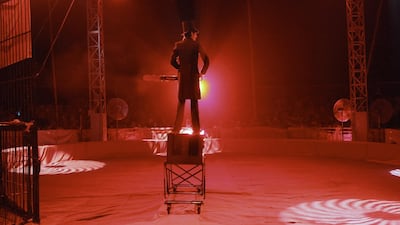A couple of weeks ago, I was in Europe as a keynote speaker at two tech conferences. Because I do not like to give the same talk twice, I decided to address a different topic at each. In the first conference, I spoke about brain-computer interfaces and the ability for people to control objects with their minds. The audience asked what kind of magic trick I was using to make a couple of them control a flying drone with their minds. There was no magic at play, just neuroscience.
I realise that by stating the latter, I somewhat imply that magic and science are two different things. Yet, they are highly intertwined. Smoke, mirrors – and physics. In The Prestige, Christopher Nolan's 2006 movie about two rival magicians at the beginning of the 20th century, one of them contacts physics legend Nikola Tesla to create the ultimate magic trick. Nowadays, magicians work with engineers and physicians but their best scientific friends are cognitive neuroscientists because the magic recipe requires four ingredients: misdirection, attention, memory and our inability to process all incoming data.
Attention dynamics in the brain was the topic of my second keynote. Because things do not always go the way we expect them to, my computer had hiccups that day. I therefore experienced a couple of meta moments where I was speaking about attention and had to misdirect the audience so that they would not notice the wrong slides were being displayed on the huge screens on each side of the stage.
Luckily, I have always been a fan of magicians, although my children will tell you I am a bad one. Over the past decade, there have been an increasing number of scientific studies about the cognitive neuroscience of magic – not just to better understand the tricks but also because magic is a real life situation to test some theories about how perception and attention mechanisms operate in the brain.
____________________
Read more from Olivier Oullier:
Neurotech can make our roads safer
Technology can tell us a great deal about our sports performance
VIDEO: the brains behind our brains
____________________
When the glitches occurred on stage, I used two simple tricks. First, I walked to the front of the stage, stopped moving and stared at a person sitting in the front row. This made most of the audience pay attention to me and then to the person they thought I was talking to instead of the screens. Then as I asked someone to join me onstage for live neurotech demo, I noticed on my monitors that the brain activity of the volunteer was not displayed on the screens. I therefore asked the audience and the volunteer a question to keep their brains busy.
But, to be honest, there was no magic at all. Despite what people think, magic is not about making people look to the left while you execute a manoeuvre on the right. Magic is about having people stare at the very object you are going to make disappear or transform and amaze them.
As stated by Rodrigo Quian Quiroga in his great Current Biology essay on neuroscience and magic: "Magicians continuously demonstrate in very engaging ways one of the most basic principles of brain function – how the brain constructs a subjective reality using assumptions based on relatively little and ambiguous information".
Take a simple trick where the magician throws a ball several times in the air before making it disappear. The repetition makes the spectator’s brain register a causal association between the movement of the magician’s hand and the ball going in the air. People’s eyes follow the ball as it goes up and down. And, when the magician keeps the ball in his hand, the audience is fooled because of its propensity to infer that the ball was once again in the air.
In his article, Quiroga used eye-tracking to measure how the misdirection tactics operate. The eyes of the spectator are usually attracted by those of the magician. If the magician looks at you, you tend to look into his or her eyes. You are not looking at what his or hands or doing. This is called creating bright and dark spots of attention.
Another classic trick is for the magician to suggest a method that allows the trick to be performed so that the audience disregards all the other possibilities – announcing, for example: “To make the ball that is in my hand disappear, I’m going to hide it in my pocket”. That way the spectator is focusing on the pocket until the magic happens and the audience realises, too late, that the pocket was not used. The misdirection can be even more simple than that: all it takes is to ask the audience an innocent question for them to focus on anything but the trick.
Magicians understood centuries ago how to fool our brains for our viewing pleasure. But nowadays, they are no longer the only ones to use these strategies and it is not always for entertainment purposes.
Professor Olivier Oullier is the president of Emotiv, a neuroscientist and a DJ. He served as global head of strategy in health and healthcare and as a member of the executive committee of the World Economic Forum


